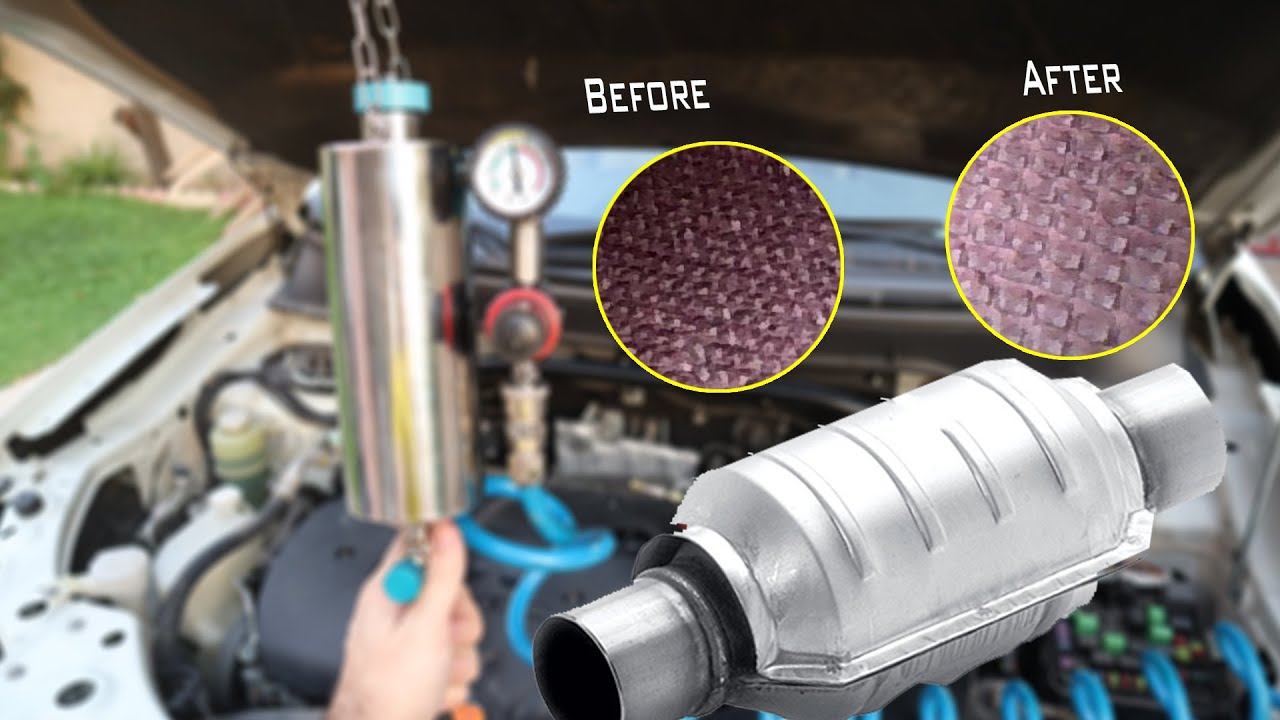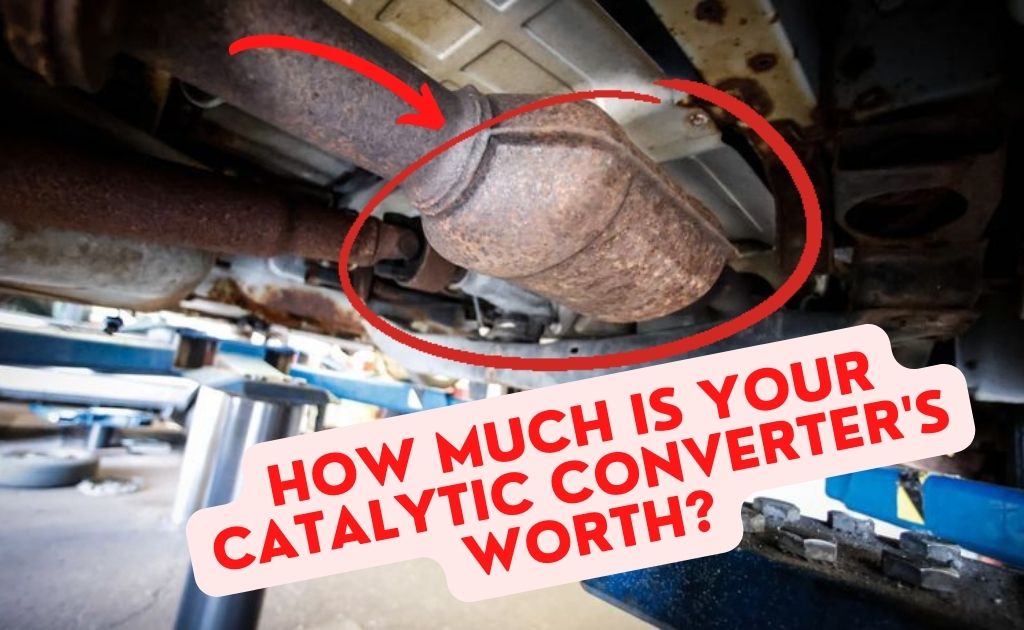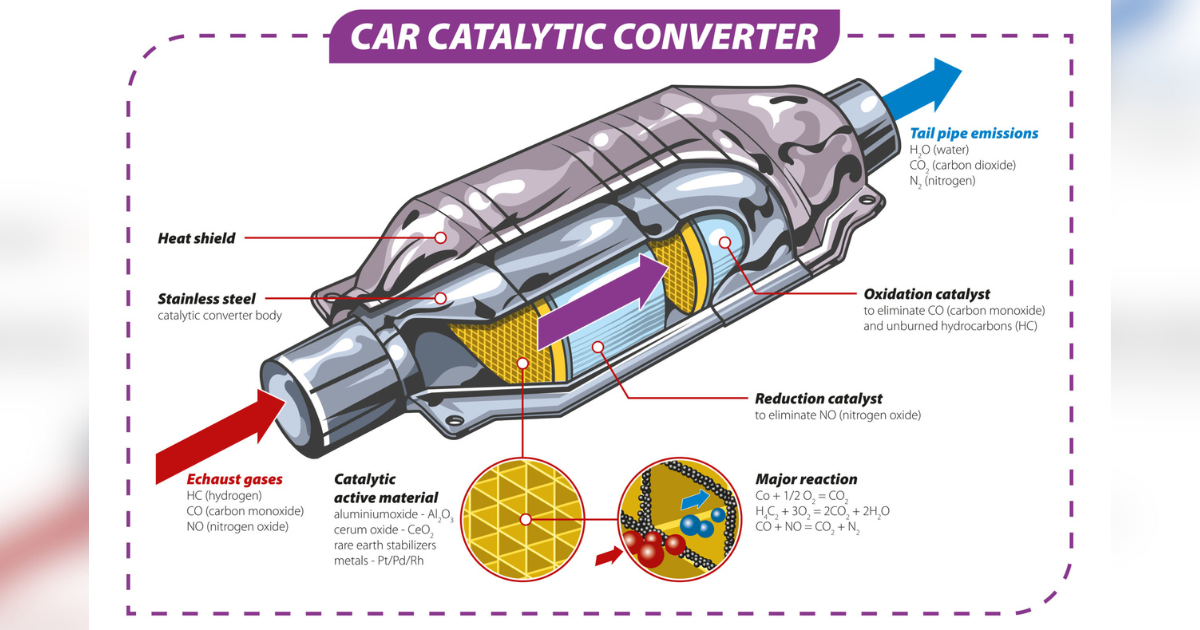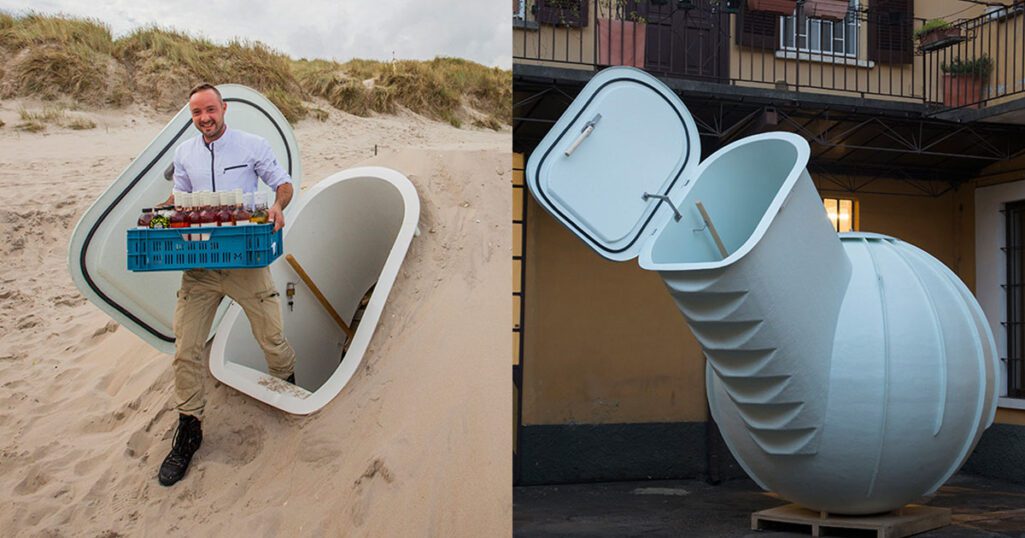
Black smoke, the smell of rotting eggs, and extreme heat from below are all signs of a clogged catalytic converter. It’s not exactly hell, but it’s close. A catalytic converter removes a lot of the dust and other things that come out of the engine. So, it can get clogged up and need to be cleaned. Catalytic converters are important for both the performance of your engine and the health of the environment, so it’s good to know how to unclog one if you ever need to. Here’s what you need to do.
Is the Clogged Catalytic Converter repairable?
Sometimes, you can fix a clogged catalytic converter by just cleaning it out. This can be done by putting a chemical cleaner into the exhaust system and running it through the converter. The cleaner will break up the deposits that are clogging up the converter, bringing it back to how it was before. In other cases, though, the damage to the converter may be too bad, and the whole thing will have to be replaced.
Usually, you only need to do this if the converter is badly broken or completely blocked. If your catalytic converter needs to be replaced, it’s important to use a high-quality one that meets or exceeds the standards set by your vehicle’s manufacturer. Using a converter of lower quality can hurt the engine’s performance and gas mileage and make it more likely to break down.
Symptoms of a Clogged Catalytic Converter
You can’t know for sure if the catalytic converter in your car is clogged without taking it out and opening it. But this method needs a few tools and some mechanical knowledge, so it’s not something anyone should try. In any case, let’s talk about some other ways to look out for if you think your catalytic converter is broken:
Engine trouble
Your engine won’t start, it sputters and dies, or you hear a knocking sound when you drive slowly. If your engine misfires or your exhaust valves don’t work right, your catalytic converter is probably about to get clogged. So check your spark plugs and valves to get rid of one of the things that could damage your catalytic converter.
Fuel efficiency problems
If your car is running on a rich mixture of fuel and air, there will be a lot of fuel that doesn’t get burned. This is another sign that your catalytic converter is getting clogged. If the catalytic converter is clogged, your engine has to work harder and use more fuel. This makes your fuel efficiency go down.
Vehicle emission test failure
Possibly the indication that is the clearest. Your car has failed an emissions test and is releasing a higher level of potentially dangerous compounds than what is allowed by the regulations.
Check engine lights come on.
The diagnostic systems in your vehicle notify you when there is a problem with one of the vehicle’s components. Ensure that the catalytic converter is working properly.
Foul odor
The stench of rotten eggs indicates that there is sulfur present in the exhaust system. Sulfur is one of the toxic gases that the catalytic converter attempts to transform into something less dangerous. Its presence indicates that your converter is clogged.
Diagnosis of a Clogged Catalytic Converter
If you can’t tell by the general symptoms, some diagnostic tools are available online and in stores through which you can check your car’s reaction. So, here are some ways to tell if your catalytic converter is clogged.
Vacuum Test
You will need a vacuum gauge to do this test. Depending on the kind of car you have, you need to put the transmission in park or neutral and then use the parking brake. Then connect the vacuum gauge to a direct vacuum line, such as a port on the intake manifold. Start the car and let it run at a low speed until it’s at the right temperature. At this point, the vacuum gauge should be between 18 and 22 in-Hg.
Keep the speed between 2500 and 3000 rpm and watch the vacuum gauge. Its reading should go down for a while and then go back to where it was in a few seconds. If it takes a long time for the reading to go back to where it was, it’s likely that your catalytic converter is clogged.
Back Pressure Test
For this test, you will need a back pressure gauge, and the test will be done on the exhaust system. Take out the oxygen sensors in the front. Change it out with the backpressure gauge, then start the car and watch what the pressure gauge says. Normal is anything between 0 and 3 psi, especially when you speed up to about 2500 rpm. If the reading is 8 psi or more, it means that your car’s catalytic converter is clogged.
Temperature Test
To test your car’s temperature, you will need thermometers. Start the car and give it a few minutes to reach operating temperature. Make sure it’s on a flat surface. Set your car’s transmission to “Park” or “Neutral,” depending on what kind of car you have. Get the temperature of the pipe that goes into the front of the catalytic converter and write it down. To do this, you might have to raise your car. Do the same thing with the pipe that goes out of the back of the catalytic converter. If the temperature in the front is at least the same as the temperature in the back, then the catalytic converter has a problem.
Things to consider before you start unclogging
Before you try to clean your catalytic converter, there are a few things you need to think about. A lot of the time, the parts inside the catalytic converter will get loosen up. If this is true, you can’t fix your catalytic converter and need to buy a new one.

Too congested
If your catalytic converter is way too clogged that the engine won’t start, you have to take it off, and either use special tools or replace the whole thing.
Check for loose parts
You can gently hit your catalytic converter with a rubber hammer and listen to see if there are any loose parts inside. If you can hear loose parts, you should take out the catalytic converter and look at it. The loose parts could get even looser and completely block your exhaust pipe, which could stop your car while you’re driving. If you find something like this in the exhaust system, the catalytic converter needs to be replaced.
Cleanse catalyst
Remember that the inside of your catalytic converter may have been cleaned, and the parts inside it may have blown out of the exhaust pipe. This can be hard to see without taking the catalytic converter off, so if you think this is the case, take it off and check it.
Oil usage
Your catalytic converter may have gotten clogged because oil got into the cylinders and burned in the hot catalytic converter. If this is the case, you should always fix the internal oil leak before trying this fix since it may only work for a short time before the catalytic converter gets clogged again.
How to Unclog a Catalytic Converter?
You can unclog your car’s catalytic converter with a catalytic converter cleaner or by taking part off and pressure washing and degreasing it before putting it back on. Also, do you know you can also unclog a catalytic converter without taking it off? Let’s look at both methods.
Unclogging the Catalytic Converter without removing it
Follow these few steps to clean your catalytic converter without removing it.
The easiest way to clean a catalytic converter without removing it is by using a catalytic converter cleaner product, i.e., OXICAT (Oxygen Sensor & Catalytic Converter). You can find more of these products online and in stores. It will also clean your O2 sensors and the whole exhaust system.
Remember that this product will not repair mechanical faults inside your catalytic converter if it’s cracked, broken, or too clogged. This is a cleaner for a slightly clogged catalytic converter that lost its power due to time.
Unclogging the Catalytic Converter by removing it
You should only undertake this method when you have tried the first method and it didn’t work out.
Required Tools
Some tools that you’ll need are an automotive degreaser, a large container, some penetrating oil, a floor jack, a jack stand, an impact wrench, and a pressure washer.
Procedure
Let the exhaust system cool down to avoid getting burnt. Jack up the car and keep it suspended with jack stands. Take out the oxygen sensor. Apply some penetrating oil to loosen the bolts. Inspect the catalytic converter after removing it. If you hear a loud rattle, then you might want to stop because the components of the catalytic converter are most likely in pieces. If you don’t hear anything, then you should continue with the process.
Use the pressure washer to wash the catalytic converter at low pressure. Immerse the catalytic converter in hot water and degreaser. Rinse the catalytic converter with the pressure washer at low pressure. Reinstall the catalytic converter after it has been allowed to drain and dry. Reinstall the oxygen sensor(s) after the catalytic converter is back in its place.
Unclogging the Catalytic Converter using a Hammer
If your catalytic converter is getting clogged, you can use a hammer to clean it.
Required tools
For this, you will need a craftsman hammer, a butane torch, a wide cold chisel, small brushes, and a pressure washer.
Procedure
Find the catalytic converter first. It is usually near the engine, which is under the car. Use the screwdriver to loosen the bolts that hold it in place once you’ve found it. Then, take the car’s catalytic converter off. You need to use the blow torch to heat up the catalytic converter. Then, take the cold chisel and lightly tap it on the side of the converter. You might have to do this more than once before the converter is clear. Then, take the piece of pipe and put it in the catalytic converter’s intake. Then, hit the pipe with the hammer. This will get rid of any junk that might be stuck in the converter. Lastly, use the hammer to tap the top of the converter to get anything stuck inside out. Put the catalytic converter back on the car and make sure the bolts are tight. You can unclog your catalytic converter and keep it running well with just a few easy steps.
Watch this YouTube video or the cleaning of the Catalytic Converter.
FAQs
How does a car act with a clogged catalytic converter?
If your car’s catalytic converter is clogged, the exhaust gases stay in the car. This causes the engine to stop because the exhaust pressure is too high. If your car runs fine at first but then starts to sputter or stop, it could be because of a problem with the catalytic converter.
Can you hammer on a catalytic converter to unclog it?
Get a rubber hammer, lift the car as high as you can, and hit it hard in the middle, the front, and the back of the catalytic converter. This is supposed to break up the inside and loosen things so they can be blown out or make more airflow.
How long can a car last with a clogged catalytic converter?
A catalytic converter can be run for as long as you want. If the catalytic converter is completely clogged, you won’t be able to start your car. In some cases, it may become completely fused right away or over time, in which case it must be replaced right away.
Conclusion
A blocked catalytic converter does not imply that it is inoperable. You can save money by fixing it. It’s important to check your car often and fix it right away if something goes wrong. Every car with an internal combustion engine needs a catalytic converter. It is a simple part to make, but it is expensive because it contains precious metals. If there is only light damage, you can clean out a clogged catalytic converter. If you don’t deal with the problem, the catalytic converter will fail and have to be replaced.




